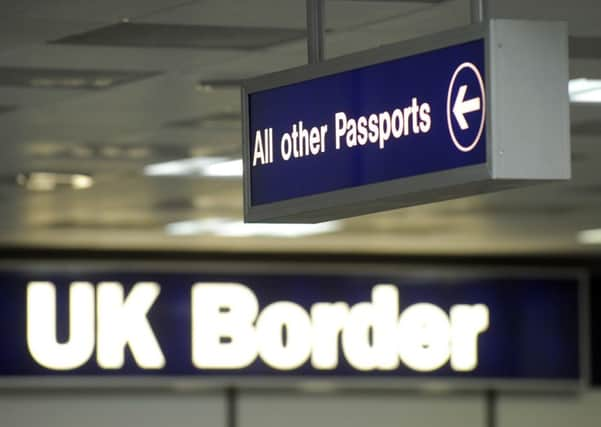Scottish independence and border controls


The situation as it stands
Scotland is currently part of the Common Travel Area (CTA), which allows free movement between the countries of the United Kingdom, as well as across the Irish border and to Jersey, Guernsey and the Isle of Man. There is little or no checking of identification when borders are crossed, and citizens can move freely between the countries.
Scotland is not part of the Schengen Area, the European Union’s ‘border-free’ travel area which covers the vast majority of EU states, and also includes Switzerland, Liechtenstein, Norway and Iceland. Schengen countries share the work of protecting the EU border, allowing citizens to move freely once inside the common area. The UK opted out of Schengen in order to maintain control over its own borders amid concerns over immigration, arguably at the expense of making travel to and from the UK more difficult.
The white paper
Advertisement
Hide AdAdvertisement
Hide AdIn its white paper on independence, the Scottish Government state that an independent Scotland will not seek to join Schengen, and instead remain part of the CTA. The white paper states: “There are no circumstances in which the Scottish Government would countenance any measure being taken that jeopardized the ability of citizens across the rest of the UK and Ireland to move freely across our borders as they are presently able to do.”
The Scottish Government write that the CTA is based on UK law and not international treaty, and an independent Scotland would be able to agree common immigration and border priorities with rUK and Ireland to make the CTA work. UK politicians such as Ed Miliband have warned that immigration policies could not be “markedly different” between Scotland and rUK in order for such an arrangement to continue.
The EU and Schengen
Because the Schengen and CTA models are fundamentally incompatible, an independent Scotland would have to choose to adopt one or the other.
While the Scottish Government’s position is that Scotland would choose the CTA, the UK Government have suggested that Scottish membership of the EU may well be contingent on agreeing to join the Schengen area.
In an analysis paper published in January, the Home Office said: “Some Member States may be unwilling to grant special opt-outs to Scotland on measures which they have had to adopt”, pointing to their view that it is the UK state which has negotiated a Schengen opt-out, and an independent Scotland would have to negotiate its own.
Writing on the Future of the UK & Scotland website, academic Charlie Jeffrey states it is likely that “the Scottish Government would not be forced into arrangements against its will” on the issue of borders, but as Scotland would face a truly unprecedented situation it is hard to know precisely how negotiations would proceed or what the political cost of a Schengen opt-out would be.
Possible outcomes
If Scotland votes ‘Yes’ to independence, it appears set to apply to join the EU with a policy of staying in the current CTA. Scotland would therefore face a battle to maintain its Schengen opt-out, a battle in which it could find an unlikely ally - the rest of the UK.
If Scotland were forced to join Schengen as a condition of EU membership, it would have to leave the CTA, leading to a new frontier in the Schengen area being created at the English-Scottish border.
Advertisement
Hide AdAdvertisement
Hide AdAs well as complicating cross-border travel within the British Isles, such a move would increase pressure on rUK and Ireland to join Schengen. That possibility, according to briefing papers from the House of Commons library, may lead to rUK throwing its weight behind Scottish calls for a Schengen opt-out.